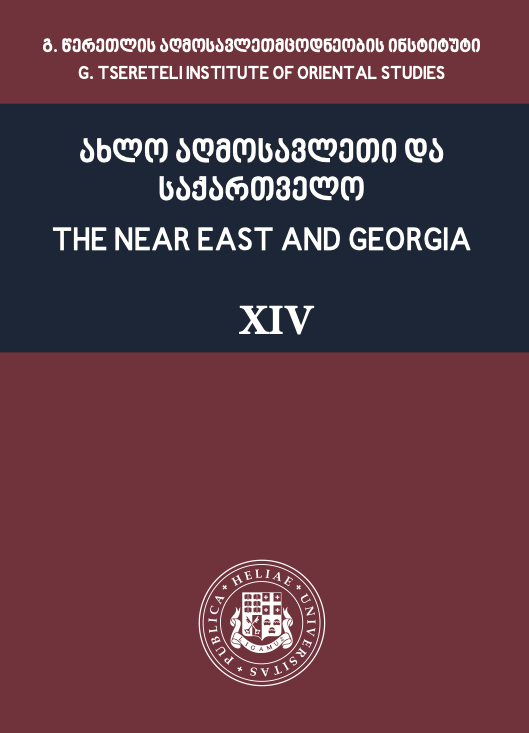LIFE OF HOLY EUPHROSYNE (V C.)
DOI:
https://doi.org/10.32859/neg/14/75-89Keywords:
Euphrosyne of Alexandria, Paphnutius, Bodlean collection, Mravaltavi of ParkhalAbstract
Euphrosyne of Alexandria (Ἁγία Εὐφροσύνη tr. “good cheer”) was a saint who disguised herself as a male to enter a monastery and live, for 38 years, as an ascetic. Euphrosyne was born in 410 in a wealthy family in Alexandria. Her father Paphnutius was a devout Christian and her mother died when Euphrosyne was twelve. When she was 18, her father wanted her to marry, so she escaped, disguised as a man, and entered the same monastery he often visited for spiritual counsel. Euphrosyne took the name Smaragdus, and lived there as a monk for 38 years, until her death in about 470. She spent most of her years as a monk in seclusion because her beauty tempted the other monks. During the final year of her life, Euphrosyne became her father's spiritual director, comforting his grief over losing his only daughter. Eventually, she revealed her identity to him and they reconciled. After she died, he entered her monastery and became an ascetic himself.
The Life of Euphrosyne can be found in the Georgian version which is preserved in the following manuscripts: bodl.1(XIs), 442r-448v, A-95, (X-XIss), 599r-602v; Ath.8 (Xs), 166r-173r; A-139 (XVIII-XIXss), gv.618-625; A-433 (XVI-XVIIIss), 99r-105v; A-643 (XIXs), 138v-143r; A-851 (XIXs), 32r-39r; H-285 (1852), gv.733-745; H-972 (XVI,1693, 1741), 291r-296r; H-1313 (XIXs), 61r72r; H-1370 (1971-1884), 43r-48v; S-300 (1779), 217r-296v; Q-300 (XIXs), gv. 232-244; Q-843 (1897), 40r45r; Q-882 (XIXs), 22r-28r; quT’-320 (1818), 76r-84r.
Before studing the source of the Georgien version of Life it is essential to present the two anciant Georgian manuscripts in which the Georgian texts are included: the famous Mravaltavi of Parkhal is kept at the National Manuscript Center in Tbilissi – A-95 (10th century). In the Oxford Bodleian Library the collection is kept as Bodl.1. It had been transported from Jerusalem to England before thr Georgian manuscripts in the Jerusalem library were studed. There is only the textual difference between the texts of the Life of Saint Euphrosyne preserved in the collection of Bodley and Mravaltavi of Parkhal. We have studied the Bodley’s version and some exemples of its correlation to the Greek source. The Georgian and Greek parallels confirm the derivation of Georgian text from Greek. The original is preserved in Analecta Bollandiana 2 (1883), p. 196-205.




